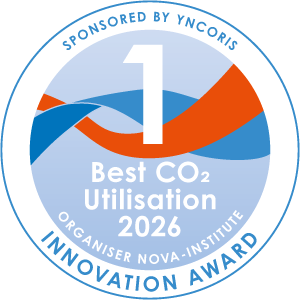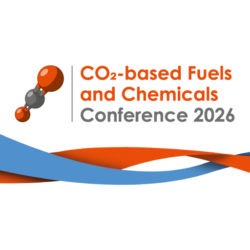Innovation Award “Best CO2 Utilisation 2026”
The “Best CO2 Utilisation 2026” innovation award is a prestigious recognition shining a spotlight on groundbreaking technologies and products that effectively utilise CO2.
Innovation in CCU is key to transforming CO2 into a valuable resource for the chemicals and materials sector, supporting a circular carbon economy. By converting CO2 into renewable carbon products, these technologies reduce dependence on fossil resources and create new business opportunities.
First stage: From now until 6 February 2026

Producers and inventors of innovative products and technologies are invited to hand in a completed application form (application form here) and a leaflet or a two-page PDF about the product in English including printable digital pictures (300 dpi), which are free of use in our subsequent media publicity. The documents should explain the particular aspects of the innovation. If it is possible please also submit a sample of the product (or a small material sample if the product is too unhandy).
Delivery address and email contact: nova-Institut GmbH, Achim Raschka, Leyboldstr. 16 / 2. OG, 50354 Huerth, Germany
Second stage: 2 March 2026
A jury consisting of representatives of the nova-Institute, the advisory board and sponsors of the conference will nominate the outstanding “Top 6” applicants prior to the conference.
After the jury has selected the “Top 6” candidates among the applicants, their application documents will be made available for download from the conference website to provide our audience and other interested individuals a first glimpse of these innovations.
Third stage: At the conference (28 April 2026)
In a short 10-minute presentation, each of the six companies or institutes will introduce their innovation on the first day of the conference (28 April). Following the presentations, the audience will choose the three winners, who will be presented with their awards at the Innovation Award Ceremony (likewise on 28 April), in the evening.
The “Top 6” will present their innovations in a shared exhibition space provided by the nova-Institute. Additionally, there is the option to book your own exhibition space.
Download: Overview of the past innovation award winners (PDF).
